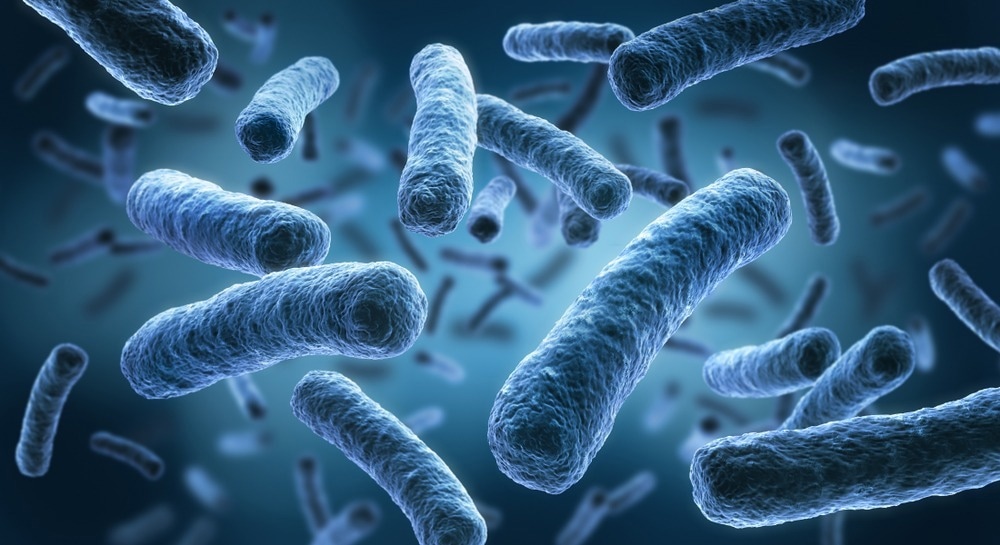Microbes are crucial in regulating energy flow within ecosystems and act as early detectors of disturbances.

Image Credit: peterschreiber.media/Shutterstock.com
The interaction between microbes and their host systems enhances the biological functionality of ecosystems. Microbial communities adapt to diverse roles based on ecosystem needs. For instance, they manage nutrient cycling in river sediments or contaminated soils, connect plants with a reservoir of biochemical intermediates, and enhance physiological intelligence via diverse intermediates in animal and human guts.1-3
Each biological system showcases distinct host-microbe interactions. Microbes offer metabolic support by producing essential metabolites for the host, while the host supplies necessary nutrients. These interactions form a characteristic microbial community structure when systems are stable. However, the dynamic nature of hosts leads to shifts in microbial diversity and complexity.
For example:
- Human gut microbiomes evolve with age.
- The rhizosphere microbial community differs during seed germination compared to mature plants.
- Changes in biogeochemistry lead to selective microbial enrichment, correlating with seasonal variations in river sediments.
Consider the human gut microbiome as a fed-batch bioreactor. The host provides raw materials and various biochemicals based on lifestyle. The gut's microbial community supports metabolism and generates intermediates based on raw material received.
As the host ages and alters its lifestyle, it releases different biochemicals dictated by its genetics, challenging the gut microbiome and shifting its structure. Disruptions in the gut environment can lead to dysbiosis (e.g., diarrhea, irritable bowel syndrome), necessitating medical intervention and affecting host metabolism.
Various dysbioses in humans, such as inflammatory bowel disease (IBD) and Type 2 diabetes, have been linked to clinical disorders. Probiotics are emerging as potential solutions, with specific bacterial species or consortia chosen based on observed dysbiosis to bridge metabolic gaps.
However, changes in microbial community structure are complex and influenced by host genetics and lifestyle. Similar trends are seen in animal husbandry, poultry, and shrimp farming, where probiotic supplements enhance immune function and reproduction, with a “Compound Annual Growth Rate” of more than 5%.

Eubiosis and dysbiosis affect the human gut microbiome by tipping the balance to their sides through environmental stimuli of either probiotics or diseases, respectively. The microbiome is supported by the physiology and genetics of the host and external dynamic factors. Image Credit: Himedia Laboratories Private Limited
Bioaugmentation of microbes to manage nutrients or pollutants in soil and aquatic systems has long been used in agriculture and bioremediation, using biofertilizers to improve nutrient availability. Attention has shifted toward probiotic consortia—microbial blends developed to help stabilize the rhizosphere and support the flow of metabolic intermediates essential for healthy plant growth. These probiotics are tailored to specific plant species, enhancing their interactions with the surrounding soil microbial community and promoting more resilient, productive ecosystems.
Bioinformatics platforms like iLINCS offer insights into physiological interactions at all levels, from gene organization to their expressions.4 Emerging tools like timeOmics can decode biochemical events and establish connections among metabolic intermediates.5 These strategies aid in selecting molecules or designing formulations as prebiotics to enhance host-microbiome interactions.
Probiotics, selected for their biochemical capabilities, hold great promise for applications ranging from soil microbial correction to personalized medicine.
References and further reading
- Shade, A. (2023). Microbiome rescue: directing resilience of environmental microbial communities. Current Opinion in Microbiology, 72, p.102263. https://doi.org/10.1016/j.mib.2022.102263.
- Ravelo-Ortega, G., Raya-González, J. and López-Bucio, J. (2023). Compounds from rhizosphere microbes that promote plant growth. Current Opinion in Plant Biology, 73, p.102336. https://doi.org/10.1016/j.pbi.2023.102336.
- Miyauchi, E., et al. (2022). The impact of the gut microbiome on extra-intestinal autoimmune diseases. Nature Reviews Immunology. https://doi.org/10.1038/s41577-022-00727-y.
- Pilarczyk, M., et al. (2022). Connecting omics signatures and revealing biological mechanisms with iLINCS. Nature Communications, 13(1). https://doi.org/10.1038/s41467-022-32205-3.
- Bodein, A., et al. (2021). timeOmics: an R package for longitudinal multi-omics data integration. Bioinformatics. https://doi.org/10.1093/bioinformatics/btab664.
About Himedia Laboratories Private Limited
With a presence in more than 150 countries, HiMedia is amongst the top three brands in the Bioscience Industry.
HiMedia Laboratories Private Limited is world renowned for manufacturing high quality culture media for microbiology. Additionally, we provide advanced media and products in the fields of Molecular Biology, Cell Biology, Plant Tissue Culture, Chemicals and Lab Aids/Equipment. As a Top Tier Global player, we are not only dedicated towards products but also striven towards introducing technologies such as Genomics Sequencing Services and Hydroponics.
HiMedia has managed to do this over decades as we have our own in-house bulk raw materials manufacturing plant. This enables us to deliver consistent quality products that conform to ISO 9001:2015 and ISO 13485:2012 and WHO: GMP.
HiMedia Labs. caters to one of the broadest Biosciences product categories: our premier established line of Microbiology products and newer promising products in Molecular Biology, Automated and Molecular Instruments, Cell Biology, Chemicals, and Premium Grade Lab Consumables, amongst others. The COVID-19 pandemic revolutionized not the clinical industry’s thought process regarding the significance of Molecular Diagnostics products.
The ‘Molecular Biology and Virology Division’ of HiMedia Laboratories Pvt. Ltd. Also called as HiGenoMB® is a One Stop Solution Provider churning out potential Research and Industry oriented Molecular biology products for the past glorious decade. About 2000 different products such as Nucleic Acid Extraction and Amplification (PCR) Kits, Cloning Reagents, Buffers & Chemicals for proteomics studies, Automated Molecular Instrumentation including RT PCR machines and PCR thermal cyclers and DNA/RNA Extraction platforms are being produced. The Proficient researchers in this department are spear heading the challenging field of Molecular Diagnostics to provide a complete solution for clinical diagnosis, agriculture, veterinary sciences, food industry, drug discovery and forensic medicine with the use of Real Time PCR or quantitative PCR kits and thermal cyclers. Our Molecular Biology Division-has established an in-house Advanced Sequencing and Bioinformatics facility which marks HiMedia’s entry into the Services space.
Our Cell Biology segment contributes with technologies which have brought in Serum free media for biopharma applications, Viral Vaccine Production Platform, Multicompendial grade chemicals, cultivated meat, and 3D bioprinting.
Moving from conventional to advanced automated methods like MALDI-TOF (Autof MS 1000) has been our newest endeavour for Microbiology.
Sponsored Content Policy: News-Medical.net publishes articles and related content that may be derived from sources where we have existing commercial relationships, provided such content adds value to the core editorial ethos of News-Medical.Net which is to educate and inform site visitors interested in medical research, science, medical devices and treatments.